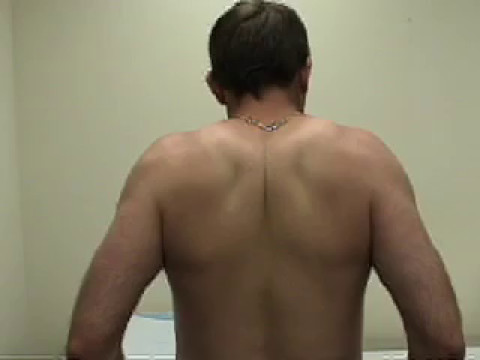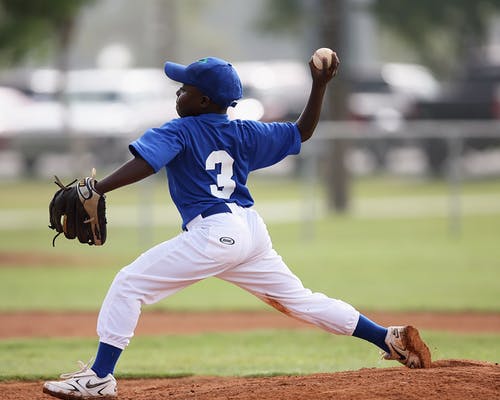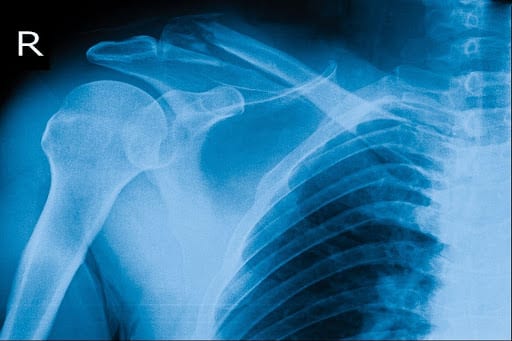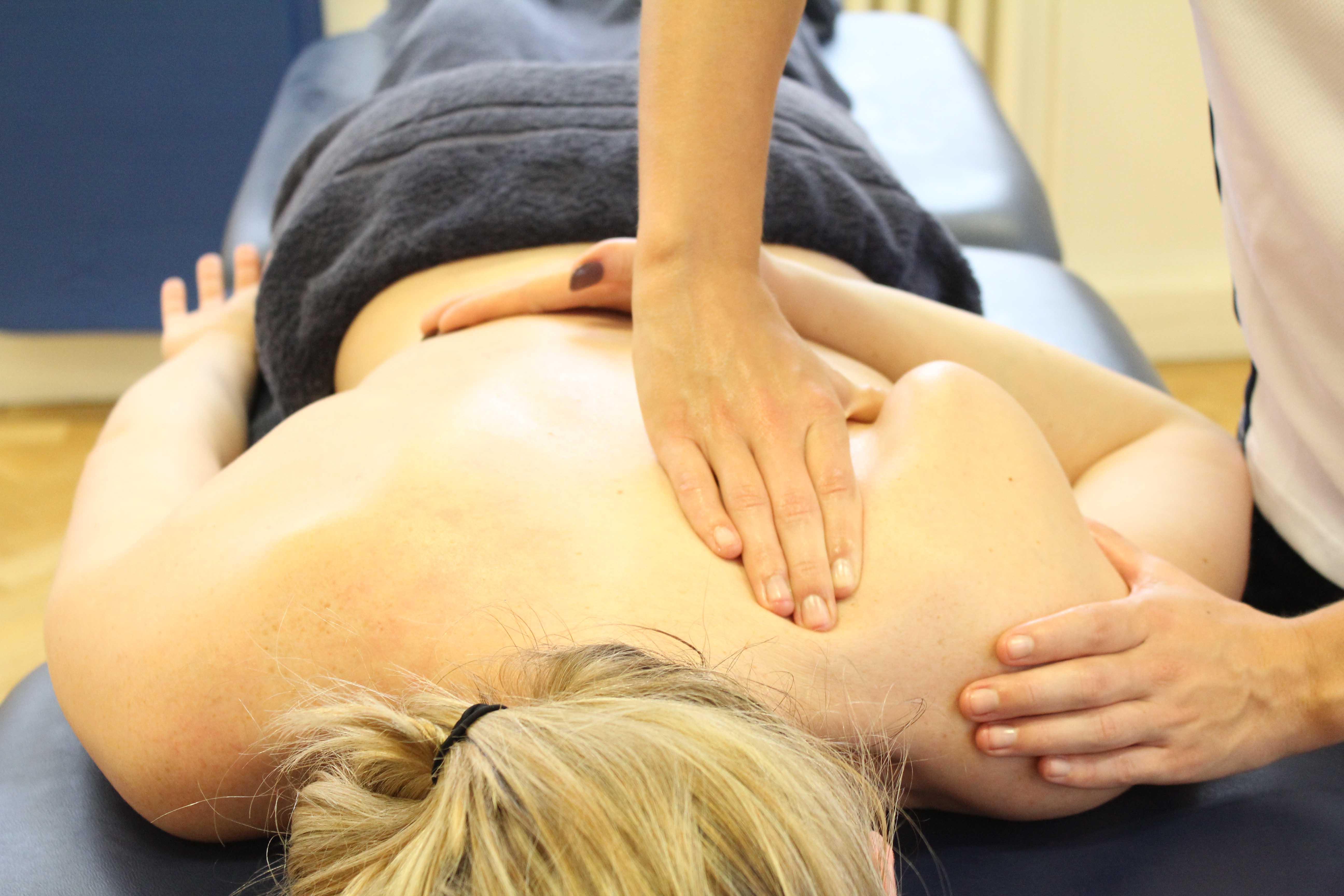|
BOOK NOW |
ASK ABOUT YOUR PAIN |
Home > Blog > Physiotherapy > Spine Pain > Shoulder Pain > Snapping Scapula Syndrome Physiotherapy
Snapping Scapula Syndrome Physiotherapy

Snapping scapula syndrome is a condition that involves the
- popping
- grating
- grinding
- or "snapping"
of bones and tissue in the scapula (shoulder blade) area when lifting and moving the arm.
The snapping symptoms may be painful, and are sometimes audible.
Snapping scapula syndrome is most commonly diagnosed in young, active individuals who perform repetitive overhead movements, such as
- stocking shelves at the local store
- or engaging in sports like weight-lifting, swimming, or baseball
Other causes can include scapula or rib-cage bone conditions, such as
- fractures
- muscle weakness or atrophy
- or tumors
Snapping scapula syndrome is usually the result of overuse of the arm, poor posture during sport activities, or incorrect joint motion, but can also be caused by a single episode of trauma to the scapula area.
Our senior physiotherapists
- treats the pain
- treats the muscle weakness
- treats the loss of arm motion
- and treats the
swelling of soft tissue
that can occur with snapping scapula syndrome.
What is Snapping Scapula Syndrome?
Snapping scapula syndrome is a condition that involves the popping, grating, grinding, or "snapping" of bones and tissue in the scapula area when lifting and moving the arm.
It may be caused by a number of bone
or soft tissue problems such as:
- Bones can be malformed from birth, or fractured, causing them to be misshapen. When the scapula moves, it may bump against a misshapen bone as it glides over it, causing a grinding or grating feeling, or sound.
- Soft tissues include muscles and bursae. The muscles between the scapula and the rib cage (subscapularis and serratus anterior) can become tight, shrunken, scarred, inflamed, or weak. As a result, the scapula will become positioned too close to the rib cage, and may rub painfully on the ribs during arm movement.
- Bursae are fluid-filled sacs that act as cushions and normally reduce friction between the scapula and the rib cage, or between the scapula and the muscles. The scapula may rub and irritate a bursa cushion. Popping or snapping can occur from a bursa becoming inflamed, from being rolled over during scapula motion, or from inadequate reduction of friction by a bursa.
Snapping scapula syndrome can be caused by:
- Repetitive activities, such as reaching overhead or throwing a ball

- Incorrect sports training techniques, such as over-training, or training without enough prior strengthening
- Incorrect posture
- Weakness in the shoulder and/or shoulder area
- Muscle tightness in the chest, neck, shoulder, or scapula area
- Neck conditions
- Shoulder joint problems
- Tumors
- Unhealed fractures of the ribs or scapula
- Inflammation of the muscles or bursae
- Nerve damage in the shoulder area
Complete recovery from snapping scapula syndrome can sometimes take 3 to 6 months, although improvement is often felt (can be experienced) after just a few weeks of scapular physiotherapy.
Healing time varies, depending on the cause and severity of the condition and each individual's fitness level and goals.
How Does a snapping scapula Feel like?
A person with snapping scapula syndrome may experience:
- Pain in the back or top of the shoulder when lifting the arm overhead or shrugging the shoulders
- A snapping, grinding, grating, or popping sensation or sound in the scapula area when lifting the arm
- A feeling of weakness in the arm
- "Winging" of the scapula, which makes it appear as if 1 edge is poking out away from the body
- Difficulty performing overhead arm motions due to pain or weakness in the scapula area
- A visible difference in how the painful scapula moves
How Is It Diagnosed?

If you see our senior physiotherapists first, we will conduct a thorough evaluation that includes taking your health history.
We will also ask you detailed questions about your injury, such as:
- How and when did you first notice the pain?
- Do you hear or feel any popping, grinding or snapping when moving
your arm?
- What activities are you performing when you hear or feel these symptoms?
- Do you have any pain or stiffness in your neck?
- Does your shoulder area feel weak or "tired"?
We will perform special tests to help determine the likelihood that you have snapping scapula syndrome. We also will determine whether your pain is coming from your neck, shoulder joint, or other areas, or if it is specific to your scapula.
To provide a definitive diagnosis, we may collaborate with an orthopedic physician or other health care provider, who may order further tests, such as an x-ray, to confirm the diagnosis and to rule out other damage to the spine, ribs, and scapula.
Typically for snapping scapula, an x-ray test is not required in all cases.
how our senior physiotherapists can help you
We will work with you to design a specific treatment program that will speed your recovery, including exercises and treatments you can do at home. Our main goal of physiotherapy is to help you return to your normal lifestyle and activities.
The First 24-48 Hours
We may advise you to:
- Rest the area by avoiding lifting your arm overhead or performing other movements that cause pain.
- Apply cold therapy around the scapula area for 15
–20 minutes every 2 hours. - Make sure you keep your spine in an upright posture when sitting or standing.
- Consult with a physician for further services, such as medication or diagnostic tests.
Reduce Pain
We may use different types of treatments and technologies to control and reduce your pain and symptoms, including
- cold therapy
- heat therapy
- ultrasound therapy
- radio-frequency Indiba physiotherapy
- diathermy
- laser
- iontophoresis
- electrical stimulation
- taping
- exercises
- and hands-on manual therapy, such as deep tissue release massage and trigger point release
Improve Motion
We will choose specific activities and treatments to help restore normal movement in the shoulder, neck, and spine.
These might begin with "passive" motions that we performs for you to gently move your arm, shoulder, neck, and scapula, and progress to active exercises and stretches that you do yourself.
Improve Flexibility
Snapping scapula syndrome is often related to tight muscles in the chest wall, shoulder, and neck. Your physical therapist will determine if these, or any other muscles, are tight, and teach you how to gently stretch them. Your physical therapist may apply hands-on techniques, such as massage and trigger-point release, to help loosen and stretch the muscles.

Improve Strength and Speed Recovery Time
Certain exercises will aid healing at each stage of recovery; we will choose and teach you the correct exercises and equipment to steadily restore your strength and agility.
We are trained and experienced in choosing the right treatments and exercises to help you heal, return to your normal lifestyle, and reach your goals faster than you are likely to do on your own.
Return to Activities
We will discuss your goals with you and use them to set your work, sport, and home-life recovery goals. Your treatment program will help you reach those goals in the safest, fastest, and most effective way possible.
Prevent Future Injury
We can recommend a home exercise program to strengthen and stretch the muscles around your shoulder and arm to help prevent future injury. These may include strength and flexibility exercises for the muscles of the neck, shoulder, arm, and scapula.
If Surgery Is Necessary
Surgery is typically not frequently needed in the case of snapping scapula syndrome.
If surgery is needed, you will follow a post-surgery physiotherapy program over several weeks guided by our senior physiotherapists who will help you
- minimize pain
- regain motion and strength
- and return to normal activities in the speediest manner possible after surgery